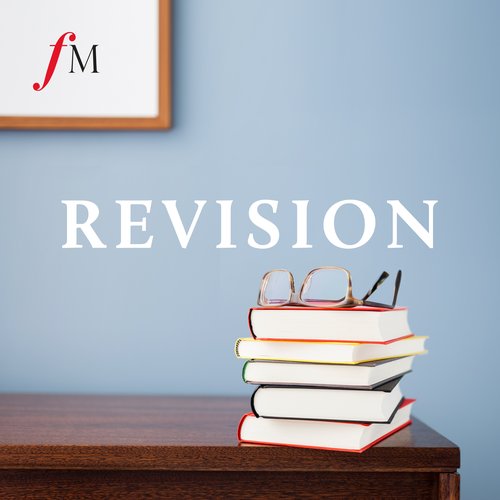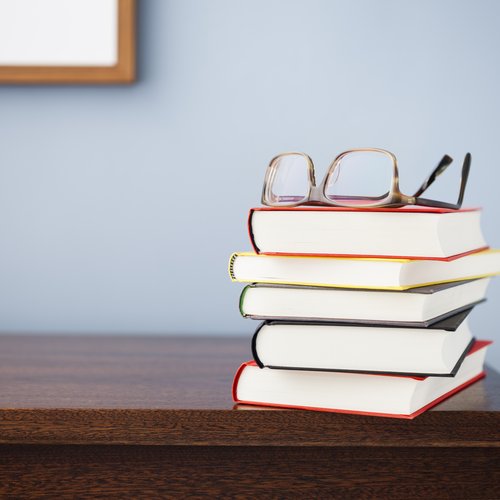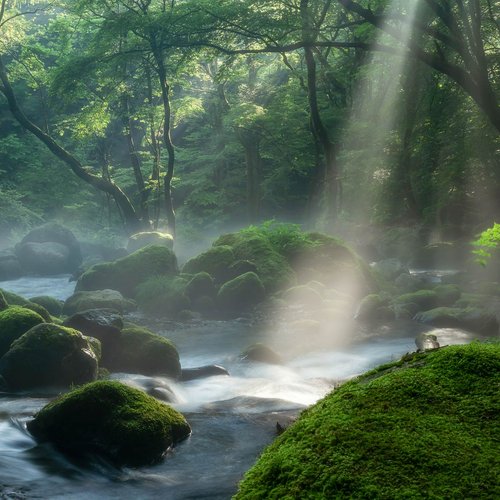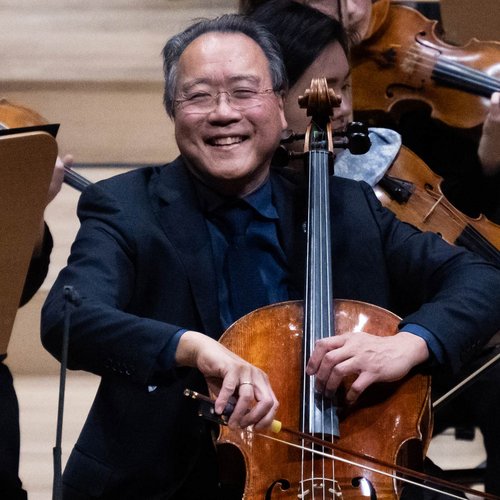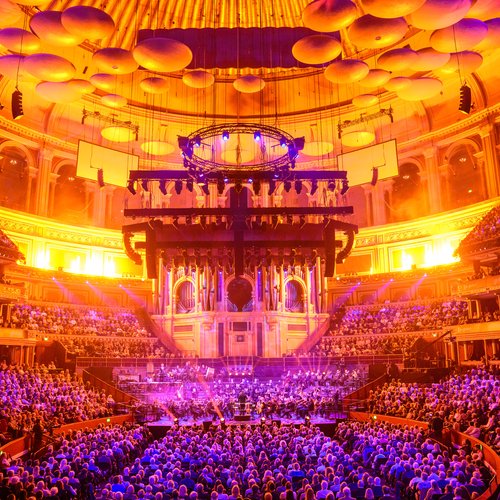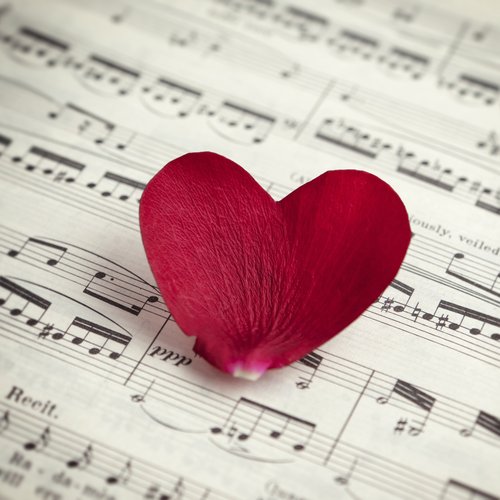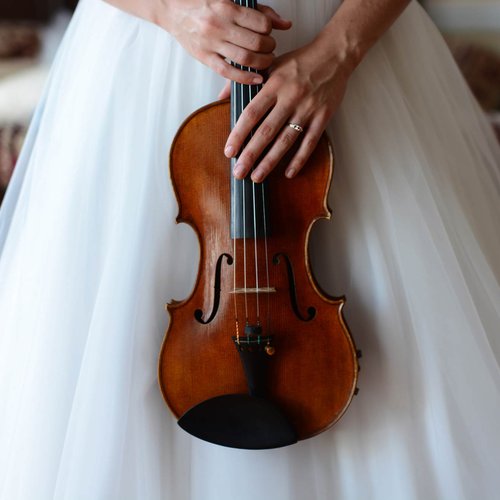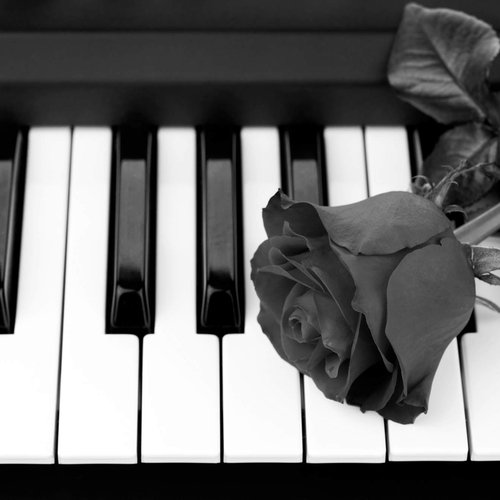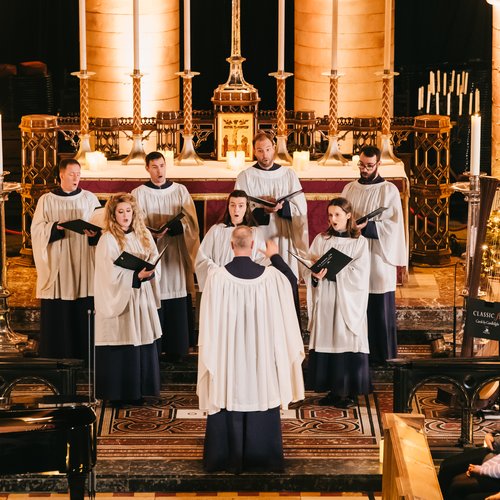20 of the best classical pieces by American composers
4 July 2024, 17:14 | Updated: 4 July 2024, 17:44

Discover America’s star-spangled musical history, with 20 of the best pieces of classical music from across the pond. From the most influential to the most patriotic, here’s our ultimate selection.
Listen to this article
-
‘America’ – Leonard Bernstein
Taken from Leonard Bernstein’s hugely influential musical West Side Story (1957), this famous song sees Puerto Rican immigrants singing, ostensibly, the praises of the American Dream. It pairs vibrant traces of Hispanic music with the cut-and-dried 4/4 time you’d expect from popular American music of the time – until Bernstein flips it on its head with one of the most recognisable uses of hemiola (a three-against-two rhythm) in classical music. The rhythmic plot twist highlights the song’s cleverly double-sided lyrics by Stephen Sondheim, which are infused with political satire hidden in plain sight. It is the perfect representation of American music – a cultural melting pot of converging identities, simmering with energy and brimming with brilliance.
Leonard Bernstein. Picture: Al Ravenna/PhotoQuest/Getty Images -
‘The Stars and Stripes Forever’ – John Philip Sousa
If you haven’t heard of American composer John Philip Sousa, you’ve almost certainly heard his music. Sousa was an composer-conductor of the late Romantic era, who supposedly composed this iconic march in his head whilst on board an ocean liner on his way home from a holiday in Europe in 1896. He committed the notes to paper on arrival in the US. ‘The Stars and Stripes Forever’ follows the standard American military march form of repeated phrasing of different melodies performed in sections called strains – a Sousa legacy. By an act of Congress, this patriotic American tune is now the official National March of the US.
John Philip Sousa. Picture: R. Gates/Hulton Archive/Getty Images -
‘Fanfare for the Common Man’ – Aaron Copland
With its booming timpani and a heart-stopping brass fanfare, this 1943 piece by Copland is instantly recognisable. Partially inspired by a speech made earlier that year by then Vice President Henry A. Wallace, in which Wallace proclaimed the dawning of the “Century of the Common Man”, Fanfare for the Common Man became massively influential in defining a cultural attitude in American life in the mid-20th century. And with such an impressive opening, it’s no wonder Copland reused the music as the theme in the last movement of his Symphony No.3.
Aaron Copland Composing in Studio. Picture: Getty -
‘Short Ride in a Fast Machine’ – John Adams
Not to be confused with the second president of the United States who shares his name, John Adams is one of the 20th century’s best-known composers. His music captures moments in American history, from Nixon’s 1972 visit to China to a choral piece commemorating the victims of the September 11 attacks, but his most famous work is the relentless four-minute masterpiece, Short Ride in a Fast Machine. The 1986 orchestral work is a fanfare in Adams’ signature style, influenced by greats like Philip Glass and Steve Reich, that dramatises the typical minimalist tropes on a larger scale. The larger-than-life musical ride is over almost as quickly as it begins, and the audience is left in a dizzying afterglow.
John Adams. Picture: Mario Wurzburger/Getty Images -
Symphony No.1 – Florence Price
One of the most historic and groundbreaking pieces to come from across the pond is Florence Price’s first symphony. The first symphony by a Black woman to be performed by a major American orchestra, it was premiered by the Chicago Symphony Orchestra in 1933. Price brilliantly integrates multiple sources of inspiration from both the Western classical world and Black musical traditions. The influence of African-American spirituals can be heard, for example, in many of the pentatonic themes used throughout the work. Price’s symphony is a musical marvel, an instant classic that has stood the test of time and preserved Price in the hall of musical fame.

Florence Price’s groundbreaking Symphony No.1 ‘Finale’ at Royal Albert Hall | Classic FM Live
-
‘An American in Paris’ – George Gershwin
As with so many of his other works, Gershwin carves out the perfect space between classical and jazz, fusing the two together to make a jaunty orchestral work for the ages. Even the tiniest details are inspired by the sights and sounds of the French capital, seen through American eyes. To make sure it really does sound like Paris, Gershwin even brought a selection of French taxi horns over to the States for the New York premiere! The musical map stretching from America to Europe captures much of the American spirit and heritage, influenced by so many different styles and genres at once.
George Gershwin. Picture: Getty -
Symphony No.4 – Charles Ives
He’s now regarded as one of America’s finest musical exports, but Ives’ music was largely ignored during his lifetime. Listen to his music and you’ll find hints of American folk songs, ballads, marches and hymns, as well as a few jazzy moments – but his far-reaching Symphony No.4 is one of his defining works. Remarkable for its complexity, often requiring two conductors in performance, and its large orchestration, this symphony has been called “Ives’ climactic masterpiece”.
Charles Ives. Picture: Getty -
Romance Op. 23 – Amy Beach
One of the greatest pioneers of classical music at large is none other than composer and pianist Amy Beach. She was the first American woman to successfully break the mould and cross the mainstream classical threshold in the 20th century. She was also one of the first American composers to succeed without the benefit of European training. Her stunning Romance shows her complete mastery of chamber music and more intimate compositions for small ensembles. The exquisite piece is anchored by a simple melody that ultimately builds and swells with emotion and seamless dialogue between the violin and piano, before a delicate pianissimo ending. The work showcases Beach’s lyrical writing and American musical storytelling at its best.

Virtuosic duo play Amy Beach's breathtaking 'Romance' for violin and piano
-
‘Star Wars’ – John Williams
Any list of America’s best classical music wouldn’t be complete without John Williams. The living legend of movie music, with at least 119 film scores to his name, exemplifies American music. With so many critically acclaimed, ultra-popular scores and soundtracks, it’s difficult to pick just one. But whether you’re a music fan or not, nearly everyone can recognise his epic Star Wars music. First released in 1977, the ‘Main Title’ theme is memorable for its large orchestration and brass fanfare that feels infectiously triumphant and, somehow, inherently American – as well as intergalactic.

Star Wars Finale! Orchestra plays with organist Anna Lapwood | Classic FM Live
-
4'33" – John Cage
If you thought 4’33” was just three movements of silence, think again. John Cage, one of America’s most influential 20th-century composers, considered it his most important work. He was playing with the idea of what music ‘is’ - and as far as 4’33” is concerned, that includes any type of sound, whether it’s played by an instrument or not. What piece could possibly be more American than the bold, out-of-the-box brainchild of the experimental John Cage?
John Cage Town Hall Concert. Picture: Getty -
‘The Entertainer’ – Scott Joplin
One of the most quintessentially American musical forms is, without question, ragtime. Dubbed the ‘King of Ragtime’, Scott Joplin mastered the art form in the early 20th century, and ‘The Entertainer’ is the perfect case study. Ragtime, characterised primarily by its syncopated rhythms, appears in compositions for various instruments, but primarily for the piano. Ragtime music originated within African-American communities in the late 19th century and became a distinctly American form of popular music, closely related to marches. We’re willing to bet you’ll recognise this iconic tune...
Scott Joplin. Picture: Getty -
‘Einstein on the Beach’ – Philip Glass
He's known as one the four great American ‘minimalists’ – that is, composers who reduced classical music to its bare bones of pitch and rhythm, and gradually rebuilt it to become more and more complex. His trance-like music and eerie vocal lines can be found in a number of American-themed operas, including Einstein on the Beach (1976). The relatively plot-less opera centres around Albert Einstein as a historical figure, but rather than creating any tangible storylines around his character, the focus is the music and the forms it experiments with. Glass’ approach encouraged audience members to connect with aspects of Einstein’s emotions and experiences and find aspects of themselves in the music – a fundamentally individualist approach to art, not dissimilar from American values.
Composer Philip Glass. Picture: Getty -
Partita for 8 Voices – Caroline Shaw
Contemporary American composer Caroline Shaw became the youngest person to ever win the Pulitzer Prize for Music in 2013 – thanks to this brilliant composition. The a cappella piece, composed for the vocal group Roomful of Teeth, was inspired by, as Shaw puts it, “our basic desire to draw a line from one point to another.” It exemplifies American innovation and forward-thinking. It is joyous and distinct; The Guardian’s Erica Jeal perhaps says it best, calling it “an explosion of energy cramming speech, song and virtually every extended vocal technique you can think of into its four ‘classical’ dance movements. It might blow apart solemn, hard-boiled notions of greatness, but it has to be the most joyous work.”
Caroline Shaw. Picture: Steven Pisano -
‘Vertigo’ – Bernard Herrmann
Alfred Hitchcock’s legendary 1958 film Vertigo earned its icon status in large part due to its unforgettable score. Hitchcock and Herrmann formed an inimitable duo, with Herrmann’s music adding invariably to the drama and impact of Hitchcock’s stories. The swirling harps and strings that colour most of the action sequences in the film mirror the vertigo that the protagonist suffers. It even includes hints of motifs used by Wagner in Die Walküre and in Tristan und Isolde. Herrmann’s highly romantic score evokes the film’s themes of destiny and echoes in America’s cultural consciousness long after its release, dizzying us with dreaminess and wonder.
Bernard Herrmann. Picture: Getty -
‘Afro-American’ Symphony No.1 – William Grant Still
A symphonic masterpiece that contains everything American about classical music is easily William Grant Still’s ‘Afro-American’ Symphony No.1. Premiered in 1931, it was the first symphony written by an African American and performed for a United States audience by a leading orchestra. Its orchestration is inherently American, with instruments spanning from a celeste to a tenor banjo. It combines a fairly traditional symphonic form with blues progressions and rhythms that were characteristic of popular Black music at the time. In arguably his magnum opus, Still managed to seamlessly integrate black culture into the classical forms for one of the first times in American history.
William Grant Still. Picture: Getty -
‘Ashokan Farewell’ – Jay Ungar
After appearing on the American TV series The Civil War and more recently on Yellowstone, Ungar’s wistful fiddle melody shot to international attention. It might sound like a traditional piece of folk music, but it was actually composed in 1982. Since then, it’s served as a ‘goodnight waltz’ at the Annual Ashokan Fiddle & Dance Camps. The piece is a waltz in D major, composed in the style of a Scottish lament, and takes its name from a former village in the Catskill region of New York. Its achingly beautiful melody is sure to tug at your heartstrings, and its salt-of-the-earth simplicity renders it one of the great pieces to define a nation.
Photo of Jay Ungar & Molly Mason. Picture: Getty -
‘Appalachian Spring’ – Aaron Copland
Copland’s popular ballet – and later, orchestral suite — tells the tale of 19th-century American pioneers building a new farmhouse. It’s packed full of all-American tunes, including a Shaker song, ‘Simple Gifts’, which Copland borrowed almost note-for-note and incorporated into the music. You might recognise the tune — it’s the basis of the popular hymn ‘Lord of the Dance’. The ballet promotes a theme of peace during a wartime setting, and it advocates for the joy to be found in simple living. In a quintessentially American way, it gave voice to the common man unlike ever before. Audiences loved it straight away, and it even won Copland the Pulitzer Prize for Music in 1945.
Aaron Copland Conducts. Picture: Getty -
‘Sleep’ – Eric Whitacre
One of the most influential classical composers to hail from America in recent years is undoubtedly Eric Whitacre. While many of his choral compositions are popular, Sleep (2000) is perhaps the best known. Composed for eight parts (SSAATTBB), its hauntingly beautiful vocal lines and wide-reaching scale – with ultra-high notes in the first sopranos’ part and ultra-low notes in the second basses’ part – quickly caught the attention of the whole world. His music is weightless and aesthetically beautiful, and this piece has quickly become a standard choral classic.
The 54th Annual GRAMMY Awards - Pre-Telecast. Picture: Getty -
Adagio for Strings – Samuel Barber
If you’re looking for the soundtrack to sorrow, look no further than Barber’s powerful Adagio. Premiered in 1938, the piece now occupies a space as America’s ultimate classical tear-jerker. It’s often performed at sad state occasions, including the announcements of Franklin D. Roosevelt’s and John F. Kennedy’s deaths. Its hauntingly beautiful melody, richly resonated in the lower strings, quickly became one of the world’s most famous classical pieces – and certainly one of America’s finest.
Composer Samuel Barber. Picture: Getty -
Rhapsody in Blue – George Gershwin
Ragtime meets Rachmaninov in this impressive jazz-classical fusion by Gershwin, which premiered in 1924. It’s daring, it’s exciting, it’s virtuosic – and it changed the face of jazz in a world of classical composers who thought themselves too ‘serious’ for the genre. The suave energy of the rhapsody – from the iconic opening clarinet glissando through to the epic big finish – perfectly encapsulates the American pulse of classical music.

Pianist plays SURPRISE self-duet in Gershwin's 'Rhapsody in Blue' at Classic FM Live


































